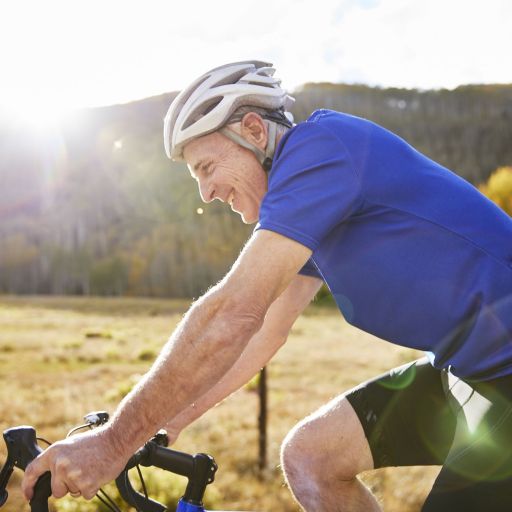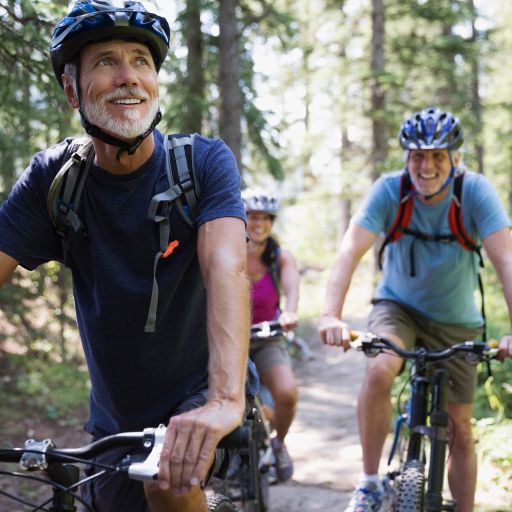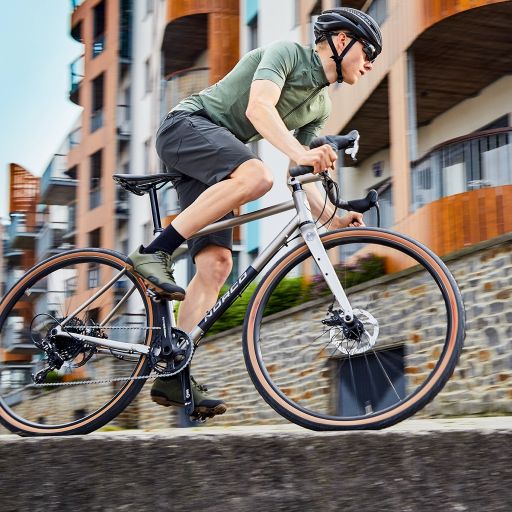Advertisement
Cycling is a recreational activity that allows the elderly to be physically active as well as enjoy the great outdoors. Regular cycling improves health, especially joint health, due to the non- weight-bearing exercise.
It is also beneficial to the cardiovascular system, building muscle mass, and enhancing mental health. If you are a senior and have decided to cycle again after a period of inactivity, the following information is for you.
Why is cycling ideal for seniors?
Cycling is great for seniors because it is low-impact. It does not put much strain on the knees, hips, or ankles. This is why it is considered ideal for older adults suffering from arthritis or joint problems. Muscle groups like the legs and core benefit the most from this.
Cycling can improve balance and lower the risk of falls. The cardiovascular benefits keep your heart healthy and improve circulation while being gentle on the body.
Let’s also not forget the mental health perks. Nothing beats the fresh air, sunshine, and the thrill of dodging squirrels while reconnecting with nature. Cycling is like therapy on two wheels. It can chase away stress, lift your mood, and kick those pesky blues to the curb.

Safety considerations for senior cyclists
Without a doubt, safety comes first when cycling, especially for seniors. They have slower reaction times as well as issues controlling their body movements. This necessitates extra care so as not to cause an accident. Start with a pre-ride health check. It’s smart to talk to your doctor before starting any new exercise.
Your doctor can help you safely add cycling to your routine and give tips to avoid injuries.
The other important aspect is putting on protective gear. Every cyclist should have a properly adjusted bike helmet. It protects the brain in the event of a fall. Make sure your helmet meets local safety standards and fits snugly. High-visibility clothing is also important.
This is especially true if you ride on roads with traffic. Bright colors, reflective strips, and flashing lights can help drivers and other cyclists see you better. This reduces the risk of accidents.
Lastly, seniors! Always stay aware of your surroundings when cycling. You need to follow traffic rules, such as using hand signals for turns. Always stick to designated cycling lanes to avoid accidents.
If you're new to cycling or haven’t ridden in years, start in quieter areas with less traffic. This will help you build confidence and improve your skills before hitting busier roads.

Choosing the right cycling gear for seniors
The right gear is essential in ensuring safety and comfort while riding a bike. Picking the right bike is more critical for the elderly. For instance, there are several options depending on your body condition and preference.
Advertisement
●Standard road bikes are nimble and quicker. However, they are not easy to ride because of the strength and balance needed.
●Hybrid bikes enable the rider to maintain a more upright position. This can be less straining on the back and shoulders for seniors. They also come with wide tires, which help with stability.
●Tricycles are a viable option for people with balance problems. They allow the riders to have all three tires on the ground at all times, which prevents tipping.
●E-bikes are favored by the elderly as well. They have a tiny engine, which makes pedaling easier. This helps seniors cover longer distances without exerting too much. They are perfect for going uphill or when saving energy for a long trip.
When it comes to clothing, comfort is key. Padded cycling shorts or seat covers can help reduce discomfort on long rides. Seniors can go for moisture-wicking shirts, which keep the skin dry and the body cool through moisture evaporation.
Wearing gloves can help with grip and also prevent the hands from blistering. Proper footwear is important, too. Look for shoes with stiff soles for support and to prevent foot pain.
Most importantly, don’t forget sunglasses to protect your eyes from glare and dust. Use sunscreen to protect your skin from UV rays while riding outdoors.

Basic cycling techniques for seniors
Climbing onto the bike may be as difficult as learning to walk again since these individuals may not have done so in a long while. Start with short, easy rides. Think of it as a bike date to rebuild your confidence. Focus on keeping your balance and maintaining a steady pace.
As your fitness improves, you can amp up the length and intensity of your rides—like leveling up in a video game!
One of the most crucial skills that should be mastered is that of brakes. It is your savior from falling down and tumbling and also from averting any unforeseen showboating. Do not bring your cycle to a complete stop without using both brakes.
Relying only on the front brake can send you flying over the handlebars—no thanks! Meanwhile, using just the back brake might leave you rolling along at a snail’s pace. Practice smooth braking to come to a gentle stop, especially when you're zooming downhill.

Stay inspired and enjoy the activity
Let’s face it. You won't have any fun cycling as a senior unless you can stay motivated. Joining a seniors’ cycling club can be beneficial. It’s a great way to make new friends and try out new places to cycle. Besides, most of these groups tend to have fun rides for beginners and not race objectives.
Also, making small objectives can help you feel inspired. For instance, try to extend your ride with a few miles every week.
You could also go on a little bit of a harder route. Having reachable goals makes the cycling adventures a lot more interesting. Remember, cheer yourself on when you achieve anything—it doesn't have to be big.
Above all, cycling should be happy. It is an opportunity for everyone to see something different and have great moments outdoors. You can have fun and, at the same time, do something good for your body. So take your time and enjoy the process as well as the bike rides.
Advertisement





